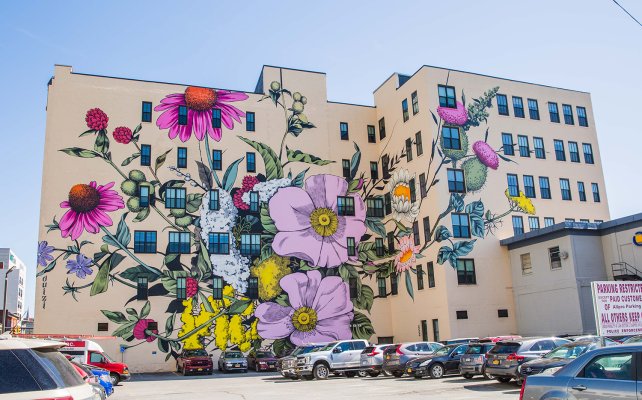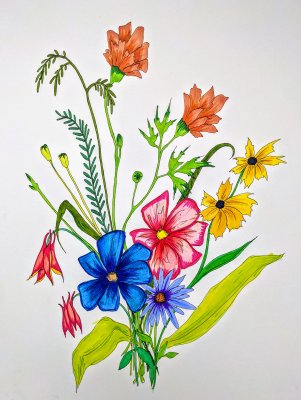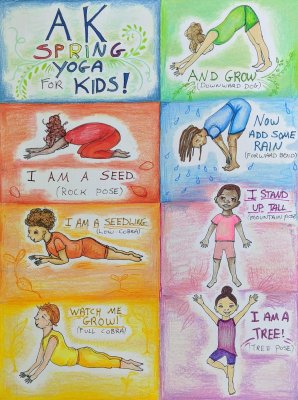Materials
- Objects collected on a walk outside (or photographed with a camera)
- A container for gathering outdoor objects
- Drawing paper
- Pencil
- Coloring materials (crayons, markers, colored pencils, etc.)
- Journal (optional)
Vocabulary
Mural: a work of art (usually a painting) created directly onto a wall
Composition: the arrangement of elements in a work of art
Discussion
Begin by using the Teaching Tips and Tools for Discussion. An example of how to bring in information about the artist from something your student observed: If they mentioned that the flowers look like ones they have seen before (or may even have in their garden at home or at a family member’s house), share that the artist choose flowers that grow natively in our area or that she saw somewhere on her visits to Western New York. She felt it was important that her painting was not only meaningful to her, but represents the area where the mural is located.
Have your students watch the following video:
At the end of the video, Jones says she wants her drawing to look beautiful when it is completed. Do you think she was successful? Do you like her idea of using something that grows locally as inspiration? What is something that grows around your home, school, or nearby park that you would want to draw or paint?
Artmaking Activity
Overview: In this activity, students will go on an outdoor walk to find inspiration for their nature drawing. They can visit their backyard, neighborhood, or local park/nature preserve.
Ask students to go on a nature walk to find inspiration. Their inspiration could be any type of plant that they find, or perhaps some interesting leaves or pinecones. They should look for things that they find enjoyable. Another option is that the teacher goes on the nature walk and creates a video of herself, or live streams the walk to the class.
Students can:
- Bring a container for collecting objects
- Bring a camera to take photographs
- Bring a journal
Once they have their plants/objects for inspiration, the students should proceed to the artmaking portion of the activity. Take this time to talk about composition and how placement can play an important role when one begins to draw. Show Jones’s mural to talk about how she decided to make her composition. Point out how some flowers are in clusters and some are on their own; have students use that as a starting point. Do your students want to put all their objects in a cluster, or perhaps some together and some on their own? Have them work on their placement before they begin drawing.
When students have their composition set, they should draw their objects. Have them sketch everything in pencil first and then trace everything in thin black lines (or another dark color).
Once it is time to add color, encourage your students to use their imagination. Perhaps they can use colors that are unusual or different, or add something fun to the background of their drawing.
When they have completed their work, have them hang it up in a location where people walk or work. In the video above, Jones mentions that she hopes people notice her mural on their way to and from work and while looking out the window of their office. You can use this statement to encourage your students to do the same with their artwork.


